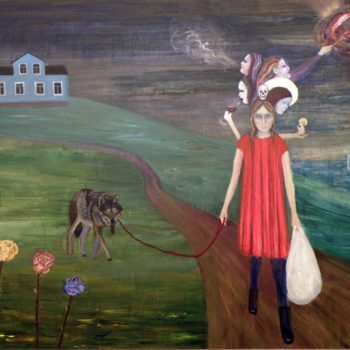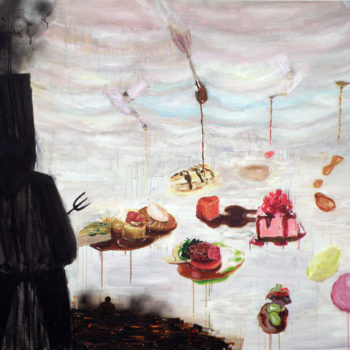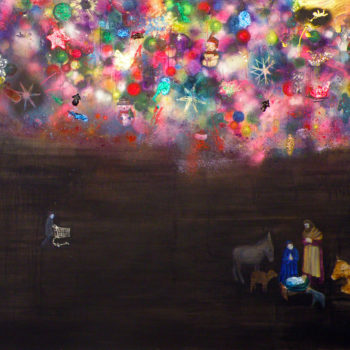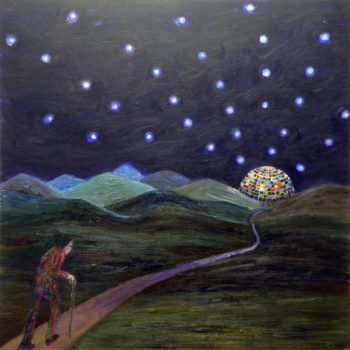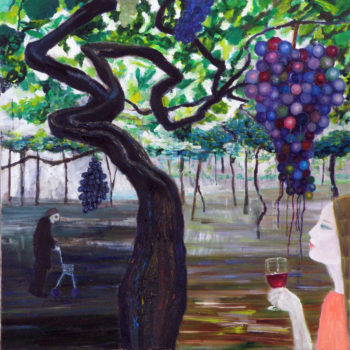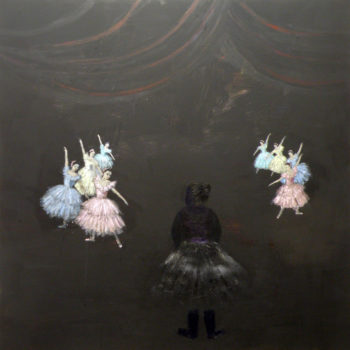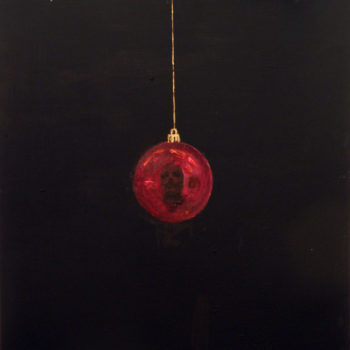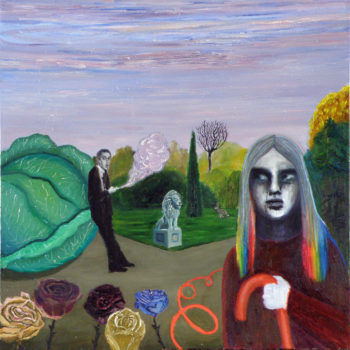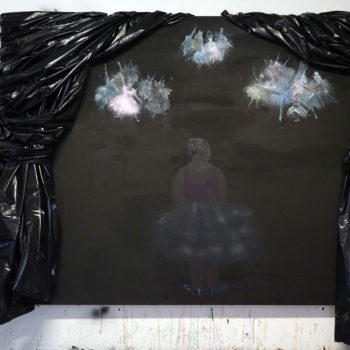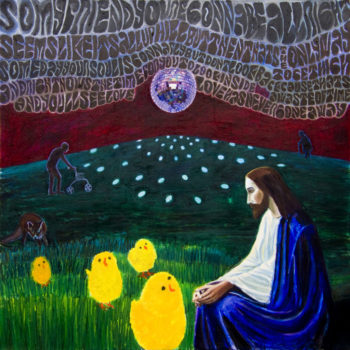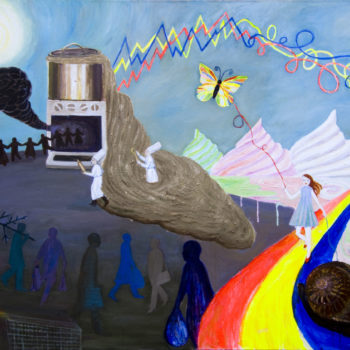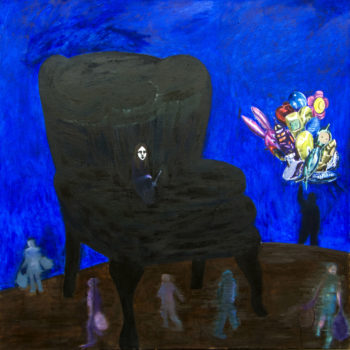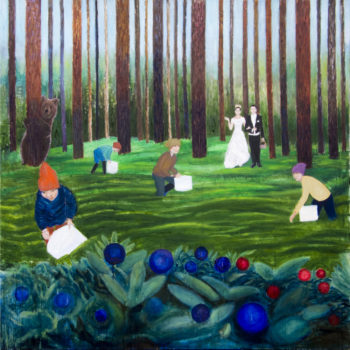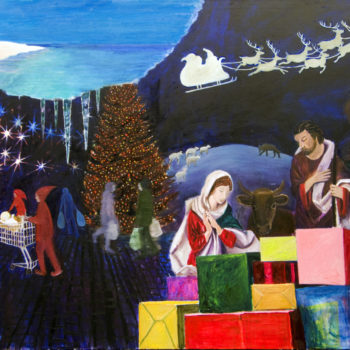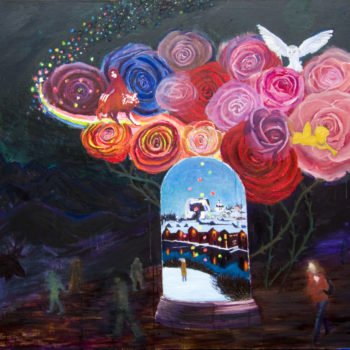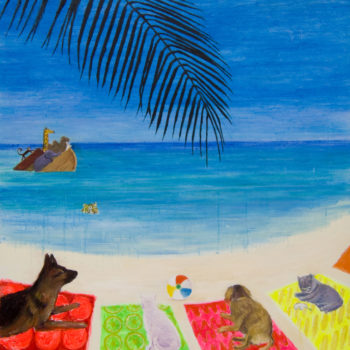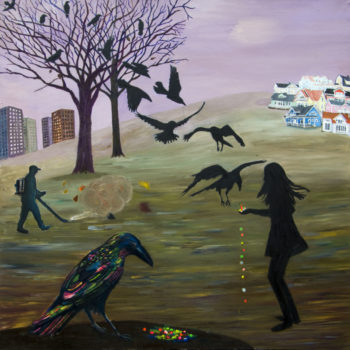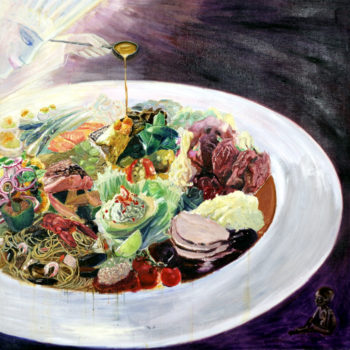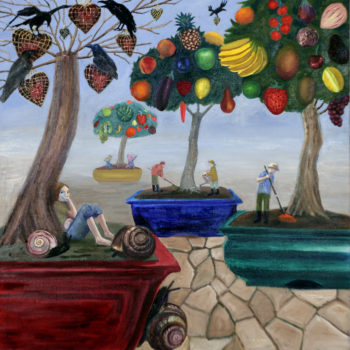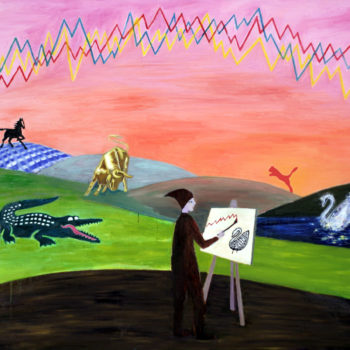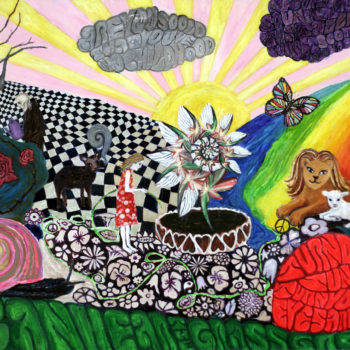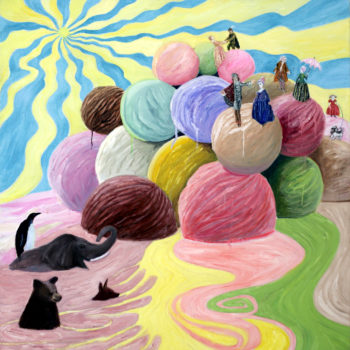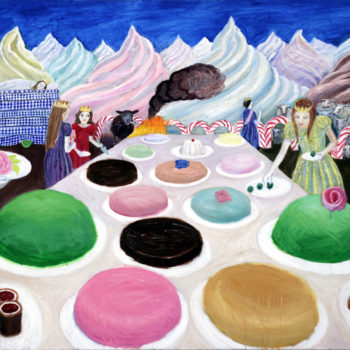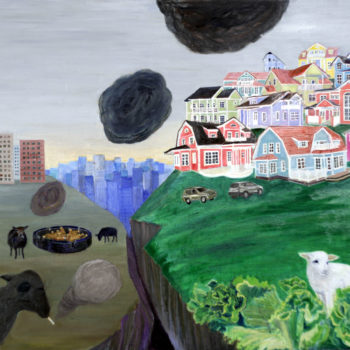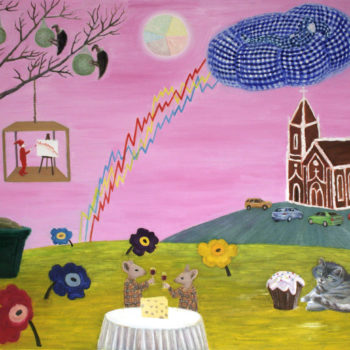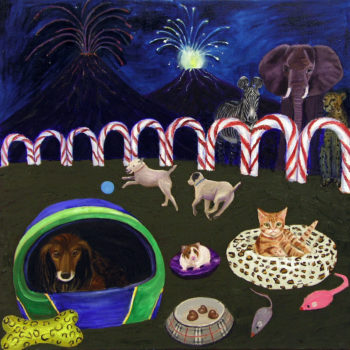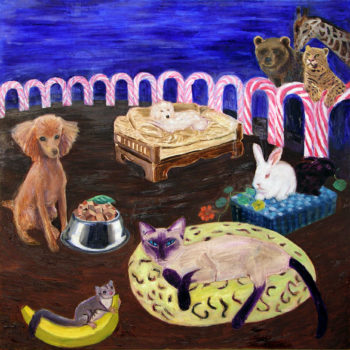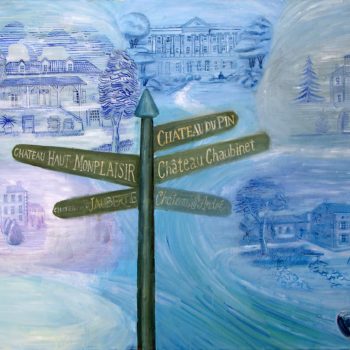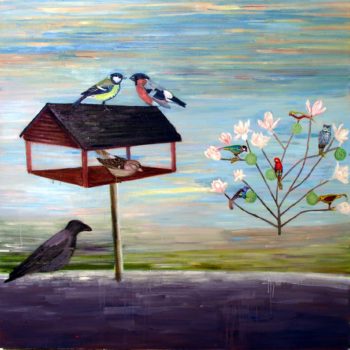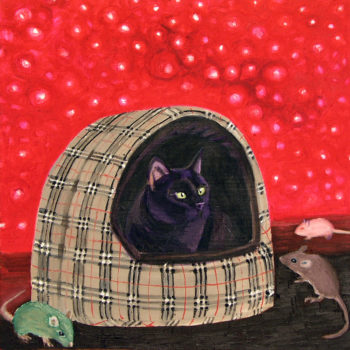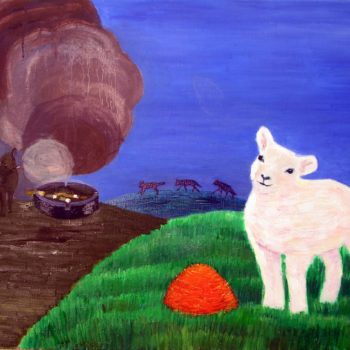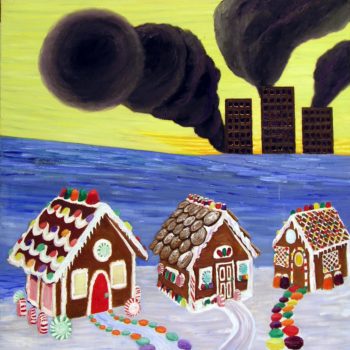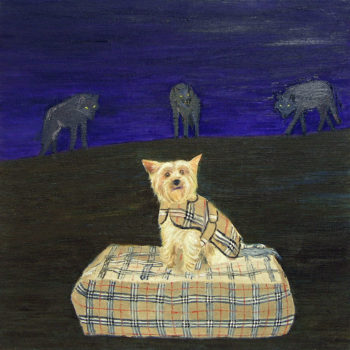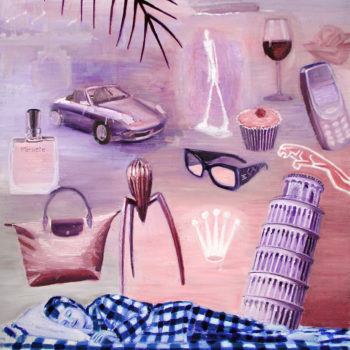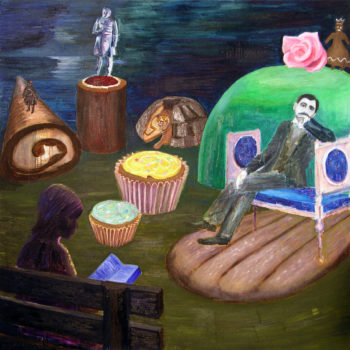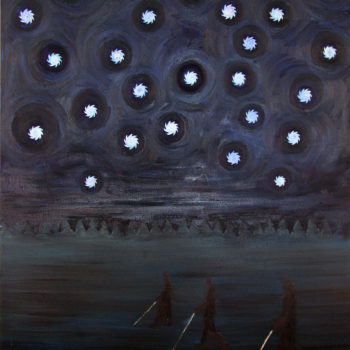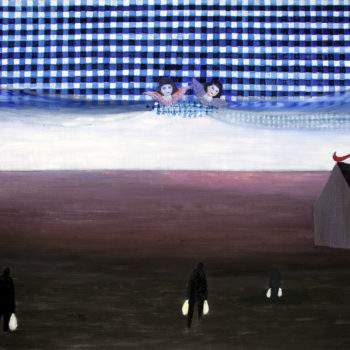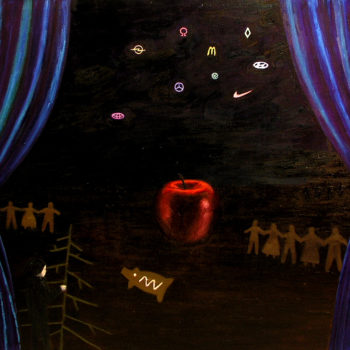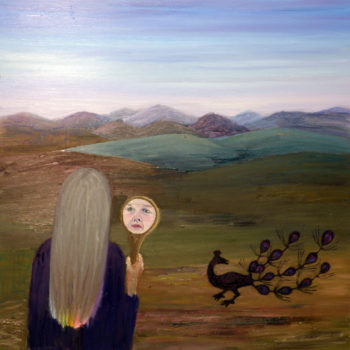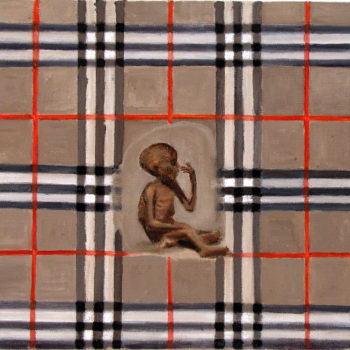Marika Kaarna
Works available
Suoraan taiteilijaltaBasic information
b. 1966, Helsinki
Painter
Residence: Porvoo
Contact information
Email: lauramarikakaarna@gmail.com
Artist’s Statement
Black sheep as an uninvited guest
Marika Kaarnan's lovely color-bursting paintings take you to the imaginative worlds, which, however, sometimes comment heavily on our real world. The Symbolism of Kaarna is multilevel and does not stay as a black-and-white reference.
The Heino Gallery has a fine set of eight paintings. Marika Kaarna's (b. 1966) big acrylic and oil paintings create her own wonderfully colorful world that hardly leaves anyone cold. The closer look to the caramel-like idyll, however, is crumbling, and it is not always easy to see where the boundary of good and evil goes.
Kaarna paintings have clear connections with naivism in terms of the use of colors and in some ways the presentation of the themes. However, this is somewhat confusing, as the subjects of Kaarna and Symbolism are not limited to naïve artists way to show the everyday life or to the description of the humor in it. Her technical grip on the subject and composition is also more versatile than traditionally self-taught naïve artists.
All of Kaarna's paintings seem to have a strong comment on our current way of life, whether it is climate change, inequality or the marginalization it causes. Kaarna, however, is not black and white, although some of the visual messages seem very clear, such as, for example, the delicacy of Chef (2007) and a hungry dark-skinned child. Sometimes it is hard to find the message right away, and the glorious smelting ice cream balls even in the “Hot Day” (2008) was not the first to take the thoughts of climate change.
However, this ambiguity and affinity are just the strengths of Kaarna's works. Combining them with razor-sharp themes and joyful colors, the result is eye-catching works that you can also watch for a long time and they give you bit by bit plenty of visual and content richness.
Two animal characters, sheep and snails, often appear in the works as frequent symbols. The sheep are white or black, the latter of which dripping tobacco and igniting fires. Who would be the good shepherd who would look for these marginalized people who would come to princess party celebrations? Snails will probably be something you need to learn to get along with. In a poor gardener (2007) snails take over the untreated garden, which the caregiver may have paralyzed under the heartbreak.
Marika Kaarna has references to Alice Kaira and Hugo Simberg. In the “Strange Flower” (2008), death and life are on their own, but here I also like Kaarna's way of mixing the pack without being too black and white. The hidden texts of the work also work funnily, as the references to the hippie movement. Sometimes you have to turn your eyes upside down in life!
• Mikko Oranen – 10.04.2008
Marika Kaarnan's lovely color-bursting paintings take you to the imaginative worlds, which, however, sometimes comment heavily on our real world. The Symbolism of Kaarna is multilevel and does not stay as a black-and-white reference.
The Heino Gallery has a fine set of eight paintings. Marika Kaarna's (b. 1966) big acrylic and oil paintings create her own wonderfully colorful world that hardly leaves anyone cold. The closer look to the caramel-like idyll, however, is crumbling, and it is not always easy to see where the boundary of good and evil goes.
Kaarna paintings have clear connections with naivism in terms of the use of colors and in some ways the presentation of the themes. However, this is somewhat confusing, as the subjects of Kaarna and Symbolism are not limited to naïve artists way to show the everyday life or to the description of the humor in it. Her technical grip on the subject and composition is also more versatile than traditionally self-taught naïve artists.
All of Kaarna's paintings seem to have a strong comment on our current way of life, whether it is climate change, inequality or the marginalization it causes. Kaarna, however, is not black and white, although some of the visual messages seem very clear, such as, for example, the delicacy of Chef (2007) and a hungry dark-skinned child. Sometimes it is hard to find the message right away, and the glorious smelting ice cream balls even in the “Hot Day” (2008) was not the first to take the thoughts of climate change.
However, this ambiguity and affinity are just the strengths of Kaarna's works. Combining them with razor-sharp themes and joyful colors, the result is eye-catching works that you can also watch for a long time and they give you bit by bit plenty of visual and content richness.
Two animal characters, sheep and snails, often appear in the works as frequent symbols. The sheep are white or black, the latter of which dripping tobacco and igniting fires. Who would be the good shepherd who would look for these marginalized people who would come to princess party celebrations? Snails will probably be something you need to learn to get along with. In a poor gardener (2007) snails take over the untreated garden, which the caregiver may have paralyzed under the heartbreak.
Marika Kaarna has references to Alice Kaira and Hugo Simberg. In the “Strange Flower” (2008), death and life are on their own, but here I also like Kaarna's way of mixing the pack without being too black and white. The hidden texts of the work also work funnily, as the references to the hippie movement. Sometimes you have to turn your eyes upside down in life!
• Mikko Oranen – 10.04.2008

